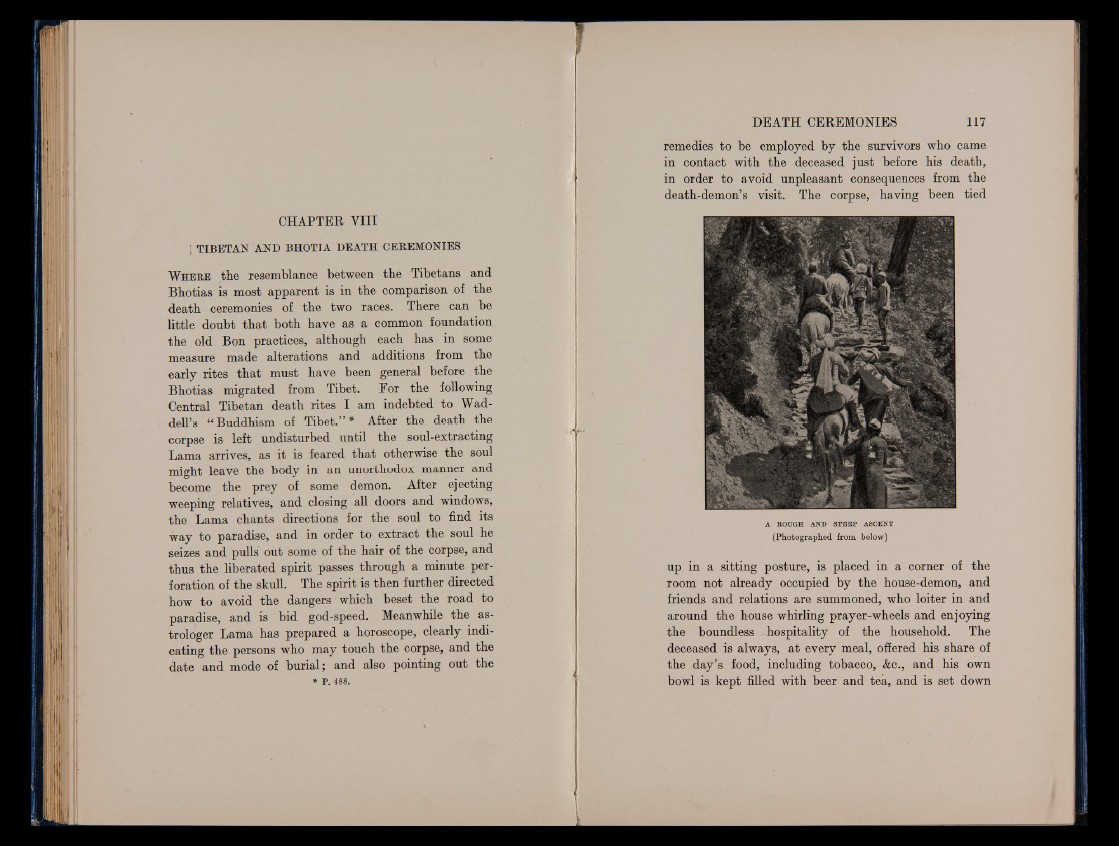
CHAPTER VIII
[ TIBETAN AND BHOTIA DEATH CEREMONIES
W h e r e the resemblance between the Tibetans and
Bhotias is most apparent is in the comparison of the
death ceremonies of the two races. There can be
little doubt that both have as a common foundation
the old Bon practices, although each has in some
measure made alterations and additions from the
early rites that must have been general before the
Bhotias migrated from Tibet. For the following
Central Tibetan death rites I am indebted to Waddell’s
“ Buddhism of Tibet.” * After the death the
corpse is left undisturbed until the soul-extracting
Lama arrives, as it is feared that otherwise the soul
might leave the body in an unorthodox manner and
become the prey of some demon. After ejecting
weeping relatives, and closing all doors and windows,
the Lama chants directions for the soul to find its
Way to paradise, and in order to extract the soul he
seizes and pulls out some of the hair of the corpse, and
thus the liberated spirit passes through a minute perforation
of the skull. The spirit is then further directed
how to avoid the dangers which beset the road to
paradise, and is bid god-speed. Meanwhile the astrologer
Lama has prepared a horoscope, clearly indicating
the persons who may touch the corpse, and the
date and mode of burial; and also pointing out the
* P. 488.
remedies to be employed by the survivors who came
in contact with the deceased just before his death,
in order to avoid unpleasant consequences from the
death-demon’s visit. The corpse, having been tied
A ROUGH AND STEEP ASCENT
(Photographed from below)
up in a sitting posture, is placed in a corner of the
room not already occupied by the house-demon, and
friends and relations are summoned, who loiter in and
around the house whirling prayer-wheels and enjoying
the boundless hospitality of the household. The
deceased is always, at every meal, offered his share of
the day’s food, including tobacco, &c., and his own
bowl is kept filled with beer and tea, and is set down